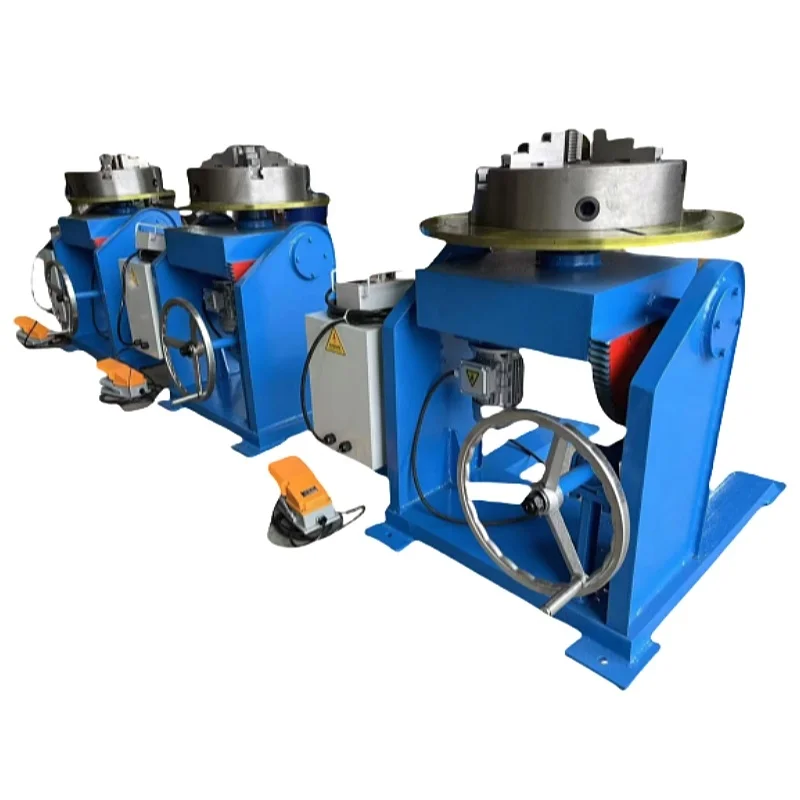In the fast-paced world of modern manufacturing, efficiency and precision are paramount. As industries evolve, the need for advanced machinery that can enhance productivity while maintaining high-quality standards has become increasingly critical. One such innovation that has gained significant traction is the automatic welding positioner. This specialized equipment plays a vital role in the welding process, ensuring that workpieces are positioned correctly for optimal welding performance.

Understanding Automatic Welding Positioners
Automatic welding positioners are designed to facilitate the welding process by providing precise control over the positioning of workpieces. These devices are equipped with a turning table that allows for the rotation and tilting of the workpiece, ensuring that it is held at the ideal angle for welding. This capability is crucial for achieving consistent weld quality and reducing the risk of defects.
The welding positioner and turning table serve as essential auxiliary equipment in the welding process. They are particularly beneficial for rotary work, where the ability to manipulate the workpiece’s position can significantly impact the welding speed and quality. By integrating these positioners with welding machines and operators, manufacturers can create an automatic welding center that streamlines the entire welding operation.
Enhancing Efficiency and Productivity
One of the primary advantages of using automatic welding positioners is the enhancement of efficiency and productivity in the manufacturing process. Traditional welding methods often require manual adjustments to position the workpiece correctly, which can be time-consuming and labor-intensive. In contrast, automatic welding positioners allow for quick and precise adjustments, reducing the time spent on setup and increasing the overall throughput of the manufacturing line.
Moreover, the use of frequency converter stepless speed regulation in the turning table of these positioners ensures high accuracy in speed adjustments. This feature allows operators to fine-tune the rotation speed of the workpiece, accommodating various welding techniques and materials. As a result, manufacturers can achieve optimal welding conditions, leading to improved weld quality and reduced rework.
Improving Weld Quality
Weld quality is a critical factor in the manufacturing industry, as it directly impacts the durability and reliability of the final product. Automatic welding positioners contribute to improved weld quality by ensuring that the workpiece is held in the correct position throughout the welding process. This stability minimizes the risk of misalignment, which can lead to weak or incomplete welds.
Additionally, the ability to control the angle and orientation of the workpiece allows for better access to weld joints, resulting in more uniform weld penetration and bead appearance. By utilizing automatic welding positioners, manufacturers can achieve higher standards of weld quality, which is essential for meeting industry regulations and customer expectations.
Versatility in Applications
Another significant advantage of automatic welding positioners is their versatility in various applications. These devices can be used in a wide range of industries, including automotive, aerospace, construction, and heavy machinery manufacturing. Whether it’s welding large structural components or intricate assemblies, automatic welding positioners can adapt to different workpiece sizes and shapes.
Furthermore, these positioners can be employed in both automatic and manual welding processes. In automated settings, they work seamlessly with robotic welding systems, while in manual operations, they provide operators with the necessary support to perform high-quality welds. This versatility makes automatic welding positioners an invaluable asset for manufacturers looking to optimize their welding processes.
Cost-Effectiveness and Return on Investment
Investing in automatic welding positioners can lead to significant cost savings for manufacturers. By improving efficiency and weld quality, these devices help reduce material waste and rework costs. Additionally, the time saved during the welding process translates to lower labor costs, allowing manufacturers to allocate resources more effectively.
The return on investment (ROI) for automatic welding positioners can be substantial, particularly for companies that rely heavily on welding in their production processes. As the demand for high-quality products continues to rise, the ability to deliver consistent results quickly becomes a competitive advantage. Manufacturers that adopt automatic welding positioners can position themselves as leaders in their respective industries, attracting more customers and increasing profitability.
Conclusion
In conclusion, automatic welding positioners are essential tools in the modern manufacturing industry, offering numerous benefits that enhance efficiency, productivity, and weld quality. As manufacturers strive to meet the demands of an ever-evolving market, the integration of advanced machinery like automatic welding positioners becomes increasingly important.
Resize Machinery, with its commitment to providing high-quality welding solutions, recognizes the significance of these devices in optimizing the welding process. By leveraging the capabilities of automatic welding positioners, manufacturers can achieve greater precision, reduce costs, and ultimately deliver superior products to their customers. As the manufacturing landscape continues to evolve, the importance of automatic welding positioners will only grow, solidifying their place as a cornerstone of modern manufacturing practices.

